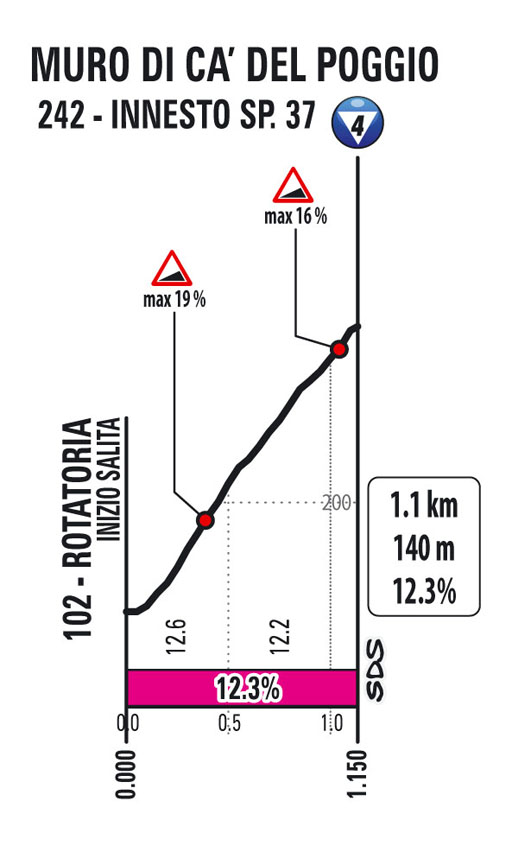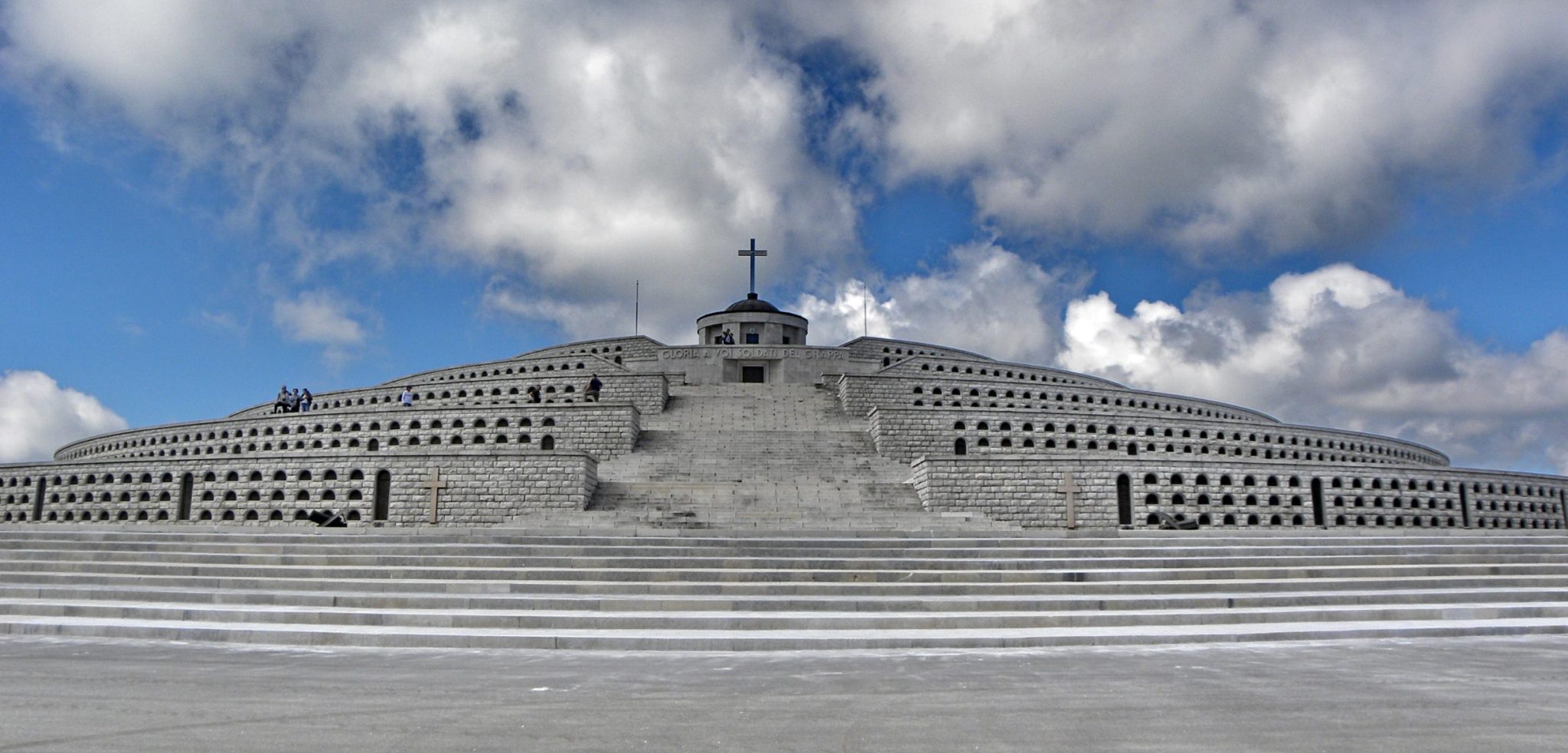One final mountain day:
It’s taken all race, but at last we’ve arrived at a mountain stage designed for attacks from distance. The big question: will the GC situation be right for them?
The route


The final stage start in the Alps falls to Alpago, the historical gateway to Belluno and the southeastern Dolomites. The stage heads in the opposite direction, into Vittorio Veneto, site of the decisive battle on the Italian Front in World War I (the armistice, as mentioned previously, being signed in Pavia in its immediate aftermath). The next port of call is one final reminder of everything wrong with Mauro Vegni: this passage of the Muro di Ca’ del Poggio makes it the single most-used KOM during his tenure heading RCS. Just like the previous five times it’s been used, it will be mostly irrelevant.

And that’s me done complaining with the route, because the rest of the stage is great. Yes, they could have used one of the irregular eastern sides with the monster ramps early on for the first ascent of Grappa, but we still have a final 95 kilometres containing two ascents of an absolute behemoth and very little flat. The Semonzo side is most the classic one, last seen a decade ago when Nairo Quintana won the MTT. It’s a brilliant climb, averaging over 8% for over 18 kilometres with the gradients only dipping below 7% during two tiny descending sections.

Of course, we cannot talk about Monte Grappa without mentioning the awful bloodshed here in the final year of World War I. After being routed at Caporetto, in modern Slovenia, the Italian army managed to halt the Austrian progress at the Piave river… but the ability to maintain that front depended on holding the line at Monte Grappa. Three large assaults were mounted here, two by the Austrians and the final one by the Italians, in the advent of Vittorio Veneto. Tens of thousands fell in those battles alone, not to mention the effects of the winter weather on the mountainside. In World War 2, another 1500 were killed here, members of the Italian resistance slaughtered at the hands of the Salò regime. A large monument, containing the remains of over 20000 fallen soldiers, as well as many surviving fortifications, form a lasting memory of humanity’s horrors.

The descent into Romano d’Ezzelino is interrupted by the short wall to Il Pianaro, with bonus seconds on the final of its two ascents.

After the first descent, the flat lasts until the next village over, where the fun begins again. The finish in Bassano del Grappa is further from the bottom of the descent, but not by much.


Bassano del Grappa has been the centre of the area in front of the Grappa since the Middle Ages, usually ruled from one of the larger cities (Vicenza, Padova and especially Venice) to its south. It may be perennially tied to the evils of Monte Grappa, even in name after the fascists had ‘del Grappa’ appended to it, but it is actually a rather picturesque place.

What to expect?
It’s the kind of stage that can only end up at opposite ends of the scale: long-range attacks if the riders are up to it, a damp squib if they’re not.
Credit to @Devil's Elbow once more.
Stage 20: Alpago – Bassano del Grappa, 184.0k
It’s taken all race, but at last we’ve arrived at a mountain stage designed for attacks from distance. The big question: will the GC situation be right for them?
The route


The final stage start in the Alps falls to Alpago, the historical gateway to Belluno and the southeastern Dolomites. The stage heads in the opposite direction, into Vittorio Veneto, site of the decisive battle on the Italian Front in World War I (the armistice, as mentioned previously, being signed in Pavia in its immediate aftermath). The next port of call is one final reminder of everything wrong with Mauro Vegni: this passage of the Muro di Ca’ del Poggio makes it the single most-used KOM during his tenure heading RCS. Just like the previous five times it’s been used, it will be mostly irrelevant.

And that’s me done complaining with the route, because the rest of the stage is great. Yes, they could have used one of the irregular eastern sides with the monster ramps early on for the first ascent of Grappa, but we still have a final 95 kilometres containing two ascents of an absolute behemoth and very little flat. The Semonzo side is most the classic one, last seen a decade ago when Nairo Quintana won the MTT. It’s a brilliant climb, averaging over 8% for over 18 kilometres with the gradients only dipping below 7% during two tiny descending sections.

Of course, we cannot talk about Monte Grappa without mentioning the awful bloodshed here in the final year of World War I. After being routed at Caporetto, in modern Slovenia, the Italian army managed to halt the Austrian progress at the Piave river… but the ability to maintain that front depended on holding the line at Monte Grappa. Three large assaults were mounted here, two by the Austrians and the final one by the Italians, in the advent of Vittorio Veneto. Tens of thousands fell in those battles alone, not to mention the effects of the winter weather on the mountainside. In World War 2, another 1500 were killed here, members of the Italian resistance slaughtered at the hands of the Salò regime. A large monument, containing the remains of over 20000 fallen soldiers, as well as many surviving fortifications, form a lasting memory of humanity’s horrors.

The descent into Romano d’Ezzelino is interrupted by the short wall to Il Pianaro, with bonus seconds on the final of its two ascents.

After the first descent, the flat lasts until the next village over, where the fun begins again. The finish in Bassano del Grappa is further from the bottom of the descent, but not by much.


Bassano del Grappa has been the centre of the area in front of the Grappa since the Middle Ages, usually ruled from one of the larger cities (Vicenza, Padova and especially Venice) to its south. It may be perennially tied to the evils of Monte Grappa, even in name after the fascists had ‘del Grappa’ appended to it, but it is actually a rather picturesque place.

What to expect?
It’s the kind of stage that can only end up at opposite ends of the scale: long-range attacks if the riders are up to it, a damp squib if they’re not.
Credit to @Devil's Elbow once more.






